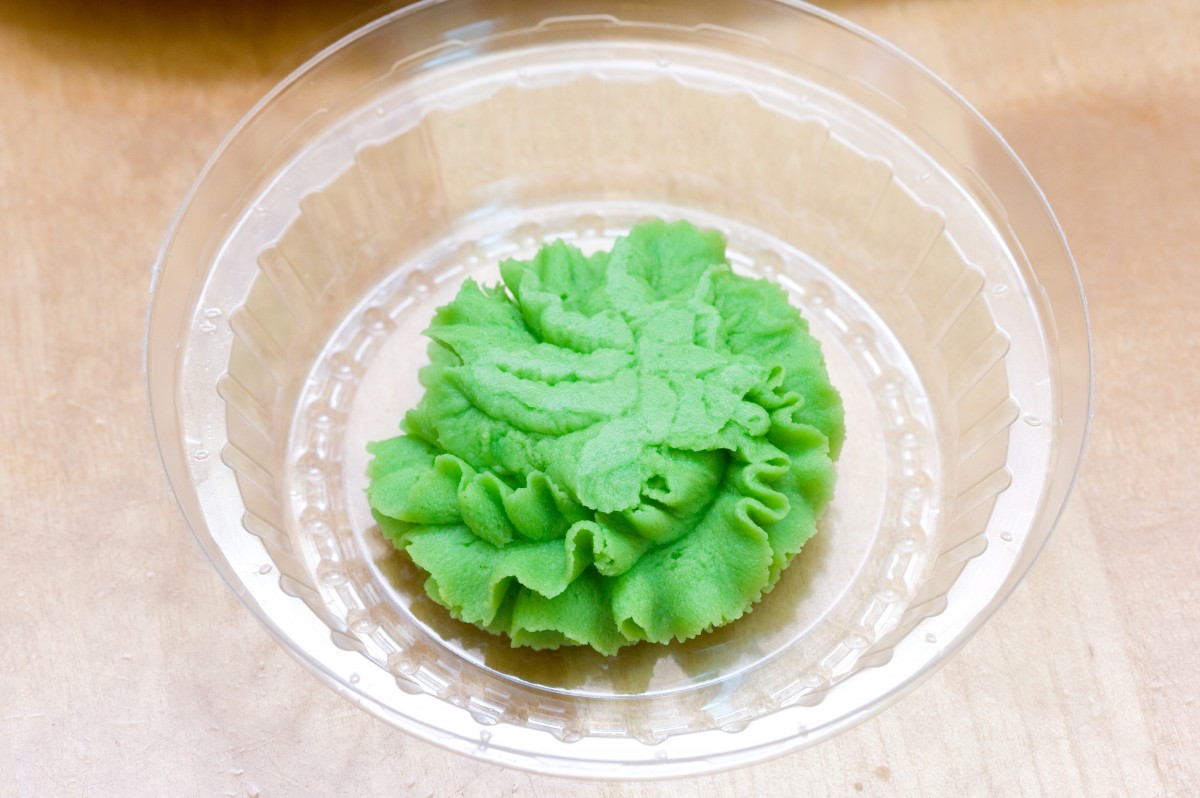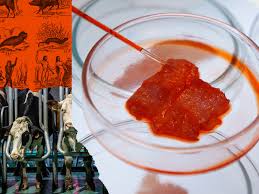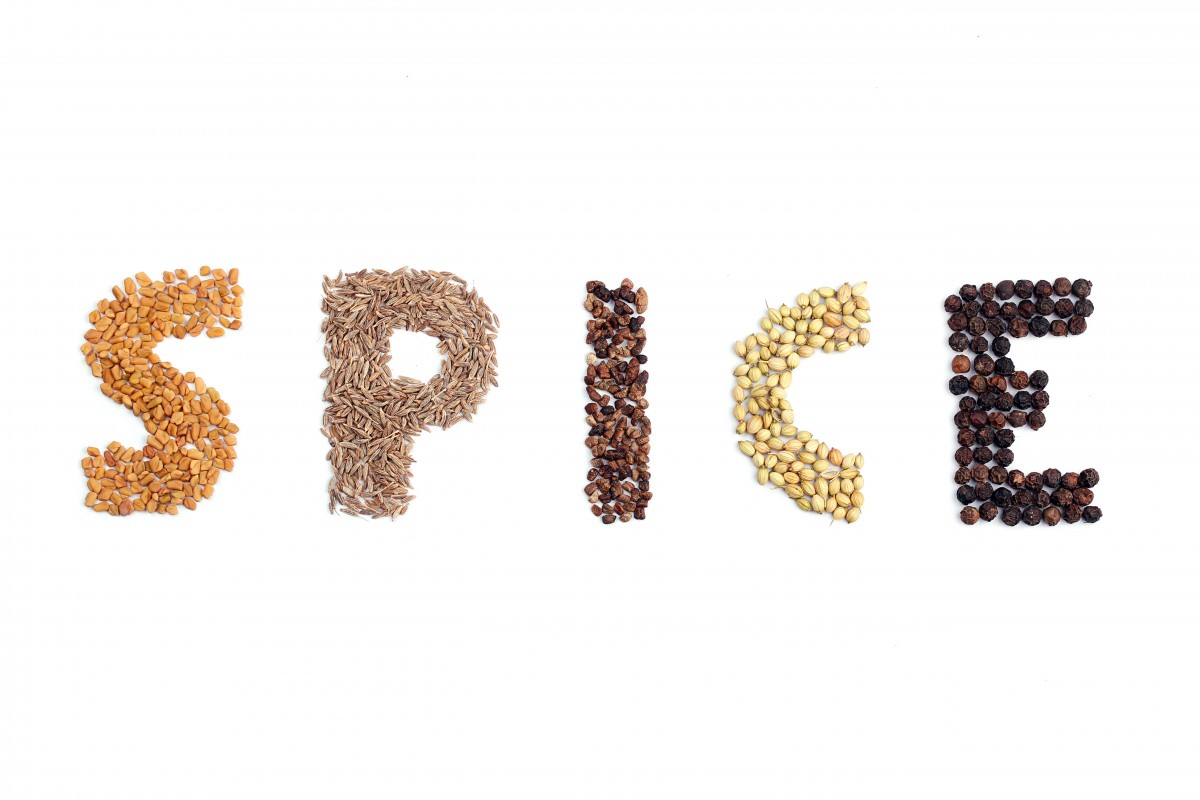
When we first decided to add wasabi to our mustard, we did so solely because it tastes great. The unique, nasal-cavity-clearing, Japanese variety of horseradish really livens up a roast beef sandwich, a pretzel, or even a potato salad. But it turns out we at DFC were ahead of a health curve with our wasabsession: Researchers in Japan (naturally) have determined that the bright green sushi condiment may help elderly folks with cognition.
The magic ingredient in the pungent rhizome is hexaraphane, a mustard oil that is present in wasabi in small amounts and has already been determined to have anti-inflammatory and antioxidant effects. The researchers created a new study to test if hexaraphane had an impact on brain function as well.
“In total, 72 healthy adults aged from 60 to 80 were divided into two groups for the research, with one taking 0.8 milligrams of hexaraphane as a daily supplement — equivalent to 5 grams of wasabi — for 12 weeks, while the other was given a placebo.
Post-trial cognitive tests showed that the group taking the supplement showed a significant improvement in their episodic and working memories compared to the placebo group.
Cognitive improvements were particularly evident in terms of their ability to process short conversations, perform simple calculations, and match names with faces.”
The study team believes their results can underpin a potential industry of memory-boosting products for elders. Until that happens, I might want to DIY this: 5 grams of straight wasabi per day sounds pretty doable, especially if accompanying a delightful sashimi lunch! Unfortunately, the amount of wasabi we use in our mustard is a trade secret, so we can’t tell you how much you’d need to consume to benefit your memory… So let’s just say, “plenty,” shall we?

Things are cooking – pardon the pun – in the cultivated meat space, and the nation of Italy has just turned up the heat! Preempting a safety assessment by the EU, which is predicted to go through, the Italian parliament has banned cultivated meat in the country, as well as the use of meat-related terms, like “steak,” to describe plant-based alternatives.
Cultivated meat is a cruelty-free animal product, in which regular cuts of meat are grown in a lab from cells harvested from still-living livestock. In handing down their ruling, Italy asserted that a ban would support Italian farmers, and protect the country’s renowned culinary heritage. Fines between €10,000 – €60,000 will be levied per violation.
Naturally, folks are upset over Italy’s ban, the first in the world. Not least among them are developers of cultivated meat, like Netherlands-based Mosa Meat. They particularly take umbrage at the parliamentarians’ questioning of the quality of their results.
“Italy’s decision to reject cultivated meat sets it apart from other nations. Such products have been sold in Singapore since late 2020, and in June the US Department of Agriculture approved two companies – Upside Foods and Good Meat – to make and distribute cultivated meat, following initial safety approvals from the US Food and Drug Administration. These two firms are now selling their chicken products at restaurants in San Francisco and Washington DC, respectively. […]
In Romania, however, the Senate has voted to prohibit the sale of cultivated meat, and this measure awaits approval by the lower house of parliament. If enacted, it would mean fines of between €40,000 and €60,000 for violations.”
As someone who’s always enjoyed Italian food – and appreciated their curation of it – I can see where the concerned lawmakers are coming from. But, given the pressures on our environment exacted by traditional meat production, as well as the animal cruelty factor, I wonder if it might be time to forge a new tradition. The main selling point of cultivated meat is that it is indistinguishable from slaughtered meat. This makes Italy’s ban, in my eyes, purely philosophical. And I don’t know if our planet has enough time for this debate!

Sometimes the coolest part of science is when your hypothesis doesn’t work out. That’s what happened to a team of researchers from the Australian National University, as reported recently by the delicious food blog Gastro Obscura. They attempted to investigate if there was a scientific reason behind the correlation between the spiciness of a location’s cuisine and the average temperature, weather-wise. They even created a handy chart cross-referencing the mean number of spices used in recipes with the region’s mean annual temperature. The numbers clearly show that as the temperature goes up (from a low in Norway and Japan to a high in South India and Thailand), so do the cuisines’ spice levels.
There are, of course, pleasantly fascinating exceptions to the rule.
“Some of the world’s spiciest food comes from countries with the hottest climates: Indonesia and Thailand, the Caribbean and Kenya, and several Indian states, including Punjab, Rajasthan, and Gujarat. These places cluster together in the upper right corner of the graph. One country outdoes all of them: Ethiopia, spicier by far, despite having a slightly lower average temperature than all of them.
 If you want to know just how spicy Ethiopian cooking can get, try some doro wat, a fragrant, slow-cooked chicken stew that one reviewer describes as, “Very spicy. Super spicy. Like I-don’t-know-how-Ethiopians-have-any-taste-buds-left spicy.” On the other hand, some very hot countries are considerably less spicy: The Philippines is in the same spiciness league as Hungary, and Ghana is as spice-poor as the UK.”
If you want to know just how spicy Ethiopian cooking can get, try some doro wat, a fragrant, slow-cooked chicken stew that one reviewer describes as, “Very spicy. Super spicy. Like I-don’t-know-how-Ethiopians-have-any-taste-buds-left spicy.” On the other hand, some very hot countries are considerably less spicy: The Philippines is in the same spiciness league as Hungary, and Ghana is as spice-poor as the UK.”
The team theorized that a greater amount of spices is being used in hotter climates as a preservative, to reduce the risk of foodborne illnesses. They were, however, unable to prove this, because it turns out the collision of food and culture is far too complex to be the result of one reason! Which I’m glad of – sometimes a bit of mystery is welcome in the human experience. Not knowing the reason why doesn’t reduce the enjoyment I get out of trying out a yemisir wat recipe, or developing spicy new condiments. In fact, it increases it!

I love blueberries. I’ve opened many clamshells of the tiny, tart, antioxidant fruits in my lifetime—sometimes to spoon them out into a bowl of fresh cream and demerara sugar and dive right in, and sometimes to have my heart sink at the sight of those beautiful little berries covered in grey mold. So imagine my delight to hear that researchers at the Kunming Institute of Botany, Chinese Academy of Sciences, have derived an entirely natural preservative from blueberries’ garden neighbour, the sunflower, which fights that destructive fuzz!
Sunflowers are already grown and harvested commercially for their seeds and the oil they produce. The team zeroed in on the chief waste product of this industry—the stems. They followed a hypothesis that the pathogen-fighting compounds within them that kept the sunflowers safe might transfer to other plants. The results were kind of stunning and showed a great deal of promise for non-pesticide antifungals in the agricultural industry.
“The researchers used methanol and ethyl acetate to prepare extracts from sunflower stems. They then isolated and identified the components in these extracts, focusing on diterpenoids, which are known to have biological activity. They found 17 diterpenoids, including four previously unknown compounds. Most of the diterpenoids showed activity against gray mold. Four of the compounds—including two of the newly identified ones—were effective at destroying the plasma membrane of this fungus, causing its cells to leak and preventing it from forming biofilms. In another test, the researchers briefly wet blueberries with the receptacle extracts, then dried the fruits and injected them with mold spores. Over a period of six days, the receptacle extracts protected almost half the berries from mold growth.”
I’m so excited at the prospect of never losing another precious berry to post-picking decay—especially if it’s not at the hands of a toxic fungicide. Plus, this is yet another clever use of a waste product for maximum benefit. Here’s hoping we see it on our tables (and in our bowls full of cream and sugar) soon!
AI Helps Battle Rancid ScourgeAs AI embeds itself further into our culture—and becomes increasingly better at mimicking people—humans in turn are finding new ways of making it work for us. Now, a team from Clemson University has harnessed AI to avert one of humanity’s peskiest culinary disasters—rancidity.
Foods go rancid when the oils or fats in them are exposed to oxygen, breaking down into unpleasant-tasting component molecules. (If you’ve ever chomped on a too-long-opened bag of chips or nuts, you know that particular metallic grossness.) Companies routinely add tiny amounts of antioxidants to foods that are prone to oxidization, in order to combat the process and preserve freshness. Sometimes it can be too much of a good thing: Certain antioxidants, in combination, cancel out each other’s effects. But figuring out when this happens and in what combos is a herculean task—one that authors Carlos D. Garcia and Lucas de Brito Ayres have figured out is perfect for AI.
unpleasant-tasting component molecules. (If you’ve ever chomped on a too-long-opened bag of chips or nuts, you know that particular metallic grossness.) Companies routinely add tiny amounts of antioxidants to foods that are prone to oxidization, in order to combat the process and preserve freshness. Sometimes it can be too much of a good thing: Certain antioxidants, in combination, cancel out each other’s effects. But figuring out when this happens and in what combos is a herculean task—one that authors Carlos D. Garcia and Lucas de Brito Ayres have figured out is perfect for AI.
“… We selected a type of AI capable of working with textual representations, which are written codes describing the chemical structure of each antioxidant. […]
Once the machine could recognize general chemical patterns, like how certain molecules react with each other, we fine-tuned it by teaching it some more advanced chemistry. For this step, our team used a database of almost 1,100 mixtures previously described in the research literature.
At this point, the AI could predict the effect of combining any set of two or three antioxidants in under a second. Its prediction aligned with the effect described in the literature 90% of the time.”
The team trained the AI further on 200 examples from their own lab, which netted them predictions that were more accurate to their real-world experimental results. The team likens an AI like theirs to “a very clever assistant,” which can run boring or monotonous tasks for its human handlers, and spit out the results they need. In helping solve the problem of rancid food, this AI/human pairing might just be our model for collaboration in the future!